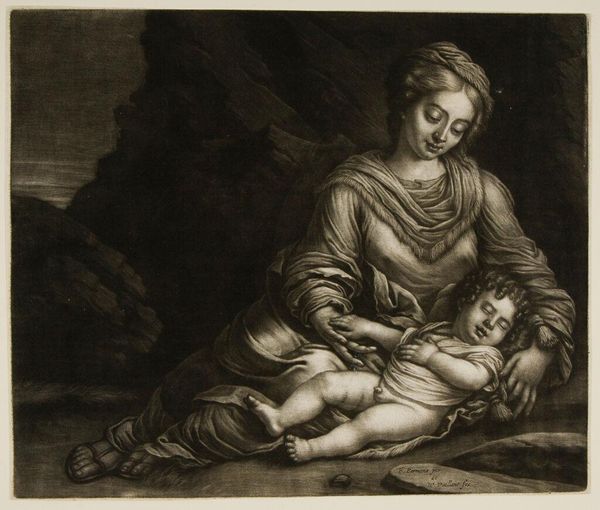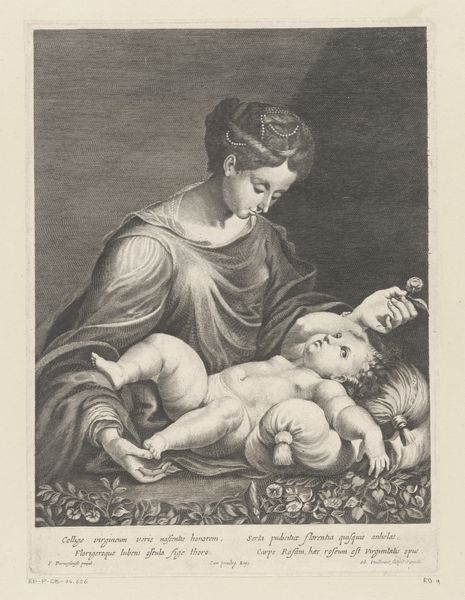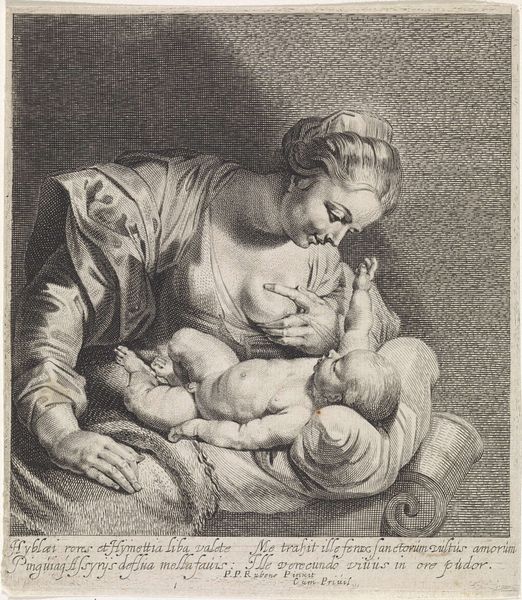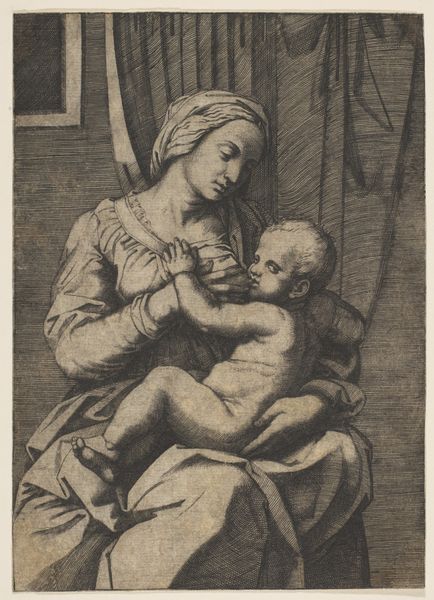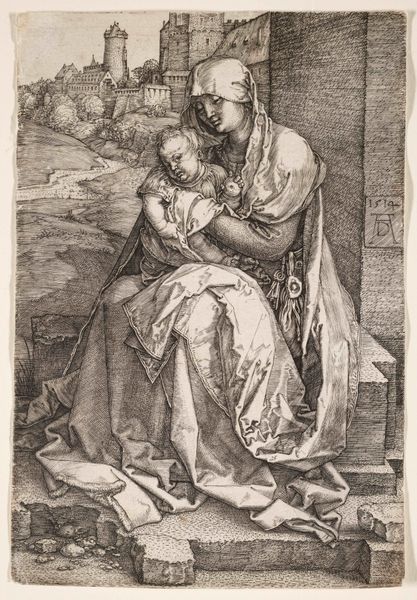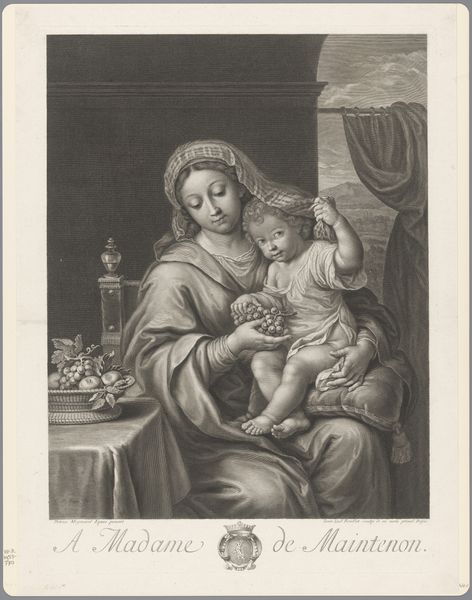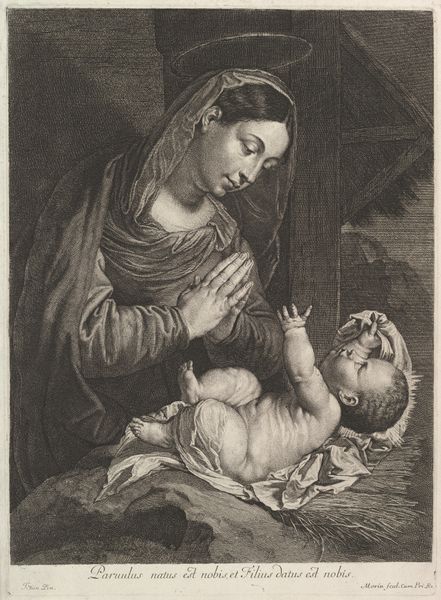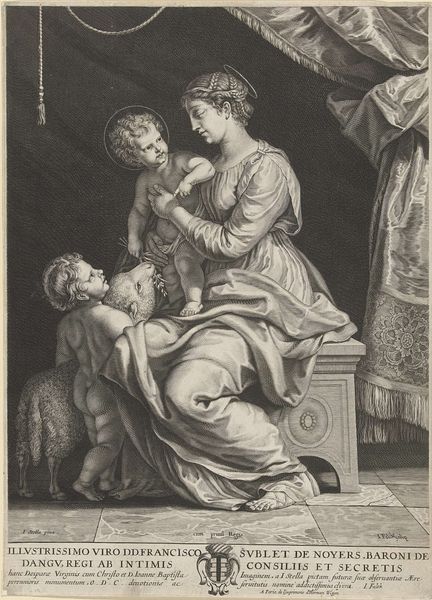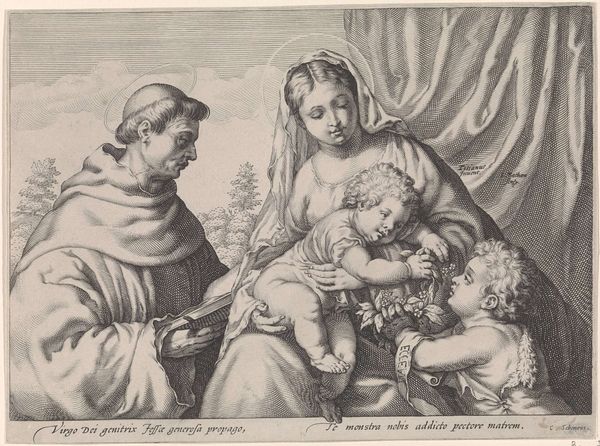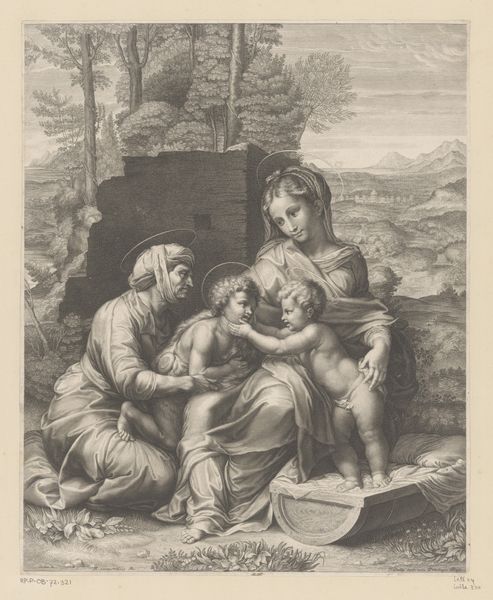
print, engraving
#
portrait
#
baroque
# print
#
genre-painting
#
history-painting
#
engraving
Dimensions: height 269 mm, width 319 mm
Copyright: Rijks Museum: Open Domain
This mezzotint of the Virgin and Child was made by Wallerant Vaillant in the 17th century. Vaillant was a master of the mezzotint, a printmaking technique that allows for rich tonal gradations. It's a laborious process, beginning with roughening the entire plate with a tool called a rocker, creating a burr that would print as solid black. The image is then created by selectively burnishing or scraping away the burr to create lighter tones. In this print, the velvety blacks create a dramatic contrast with the softly lit figures of Mary and the sleeping Christ Child. The medium lends itself particularly well to rendering the textures of fabric and skin, evoking a sense of intimacy and tenderness. Mezzotint allowed printmakers to create images that mimicked the look of paintings, making art more accessible to a wider audience. The labor-intensive process also speaks to the value placed on skilled craftsmanship in the production of art during this period. So, in this work, we see the intersection of technical skill, artistic expression, and the expanding market for images in the 17th century.
Comments
No comments
Be the first to comment and join the conversation on the ultimate creative platform.
